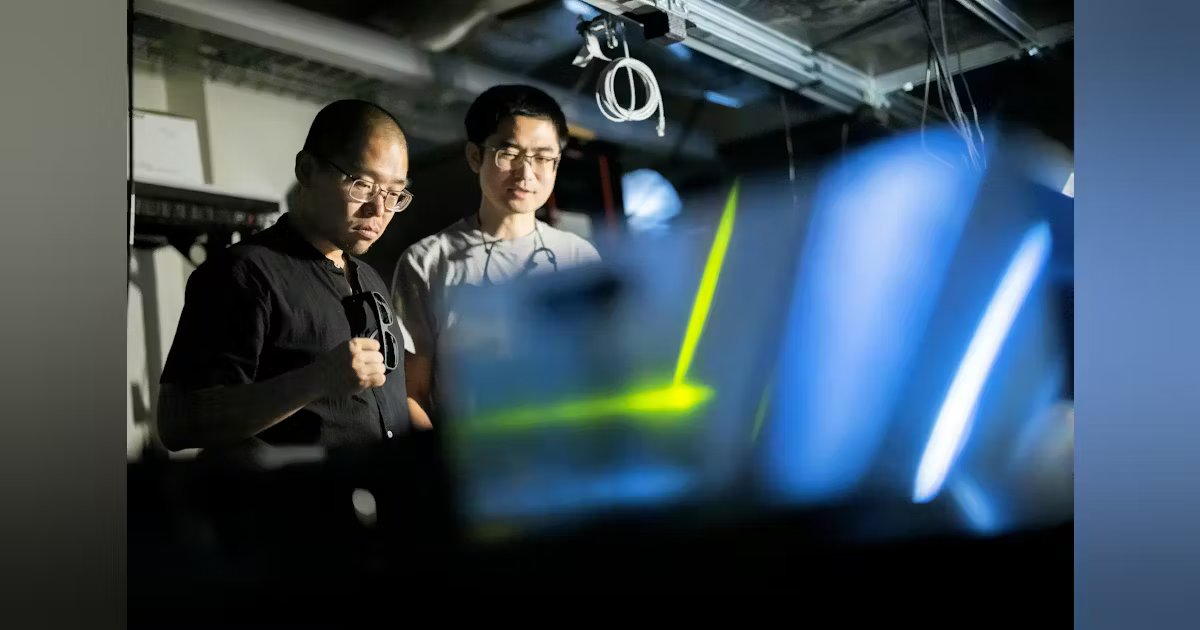When the pump laser was circularly polarized, time reversal symmetry (in which behavior remains the same whether time runs forward or backward) was broken and a topological gap was opened (with Chern number C=1). “On the other hand, when the pump laser is linearly polarized the gap remains closed,” Zhen says. “Essentially, we verified all of this by reconstructing the Floquet band structure from transient spectroscopy measurements.”
As you can imagine, a few moments really stood out for the team during this work. “The first one was that when we changed the pump polarization from linear to circular, we saw the gapless spectrum change into a gapped spectrum, which is a clean demonstration of the topological phase transition,” says Zhen. “And the second was seeing the measured Floquet spectra line up with our calculations and predictions from five or six years ago. It was a genuine ‘Eureka!’ moment.”
Three challenges: Laser, sample, measurement
Along the way, the researchers also faced three different types of challenges to overcome. First, the laser system was heavily customized, “so we need a very strong laser in a less common wavelength regime (mid-infrared), and a rather long pulse duration (at least to the standard of current ultrafast lasers),” says Zhen. “It involved a lot of planning and the great abilities of Light Conversion to deliver it.”
The sample itself was also a challenge. “Fabrication of a high-quality AlGaAs photonic crystal on the substrate of silicon oxide (SiO2) with well-controlled dispersion was very challenging for us,” he adds.
And then the measurement required performing transient spectroscopy with enough resolution in frequency and in space domains, and being able to extract the Floquet band structures from the measured results—which were difficult as well.
Topological protection of optical signals
What does this work mean for the field of nanophotonics and PICs, and optical comms and quantum applications? “It offers a broad and general method to add topological protection of optical signals,” says Zhen. “Furthermore, it can be implemented ‘on demand’ by shining another laser at it—rather than relying on magnets or exotic media. In terms of potential applications, I think it can eventually enable one-way routing on chips to tolerate bends and defects, which means more forgiving PIC designs and higher yield. Furthermore, it can provide a pathway to protect fragile quantum states of light and reduce decoherence in quantum photonics. Of course, there is still significant work ahead of us before these ideas can become reality.”
In the near term, “we aim to scale the concept to different frequency ranges, such as microwave and telecom, as well as on-chip integration,” Zhen says.
Looking farther down the road, Zhen’s team is also exploring the possibilities of extending their concept into 3D photonic structures (from the current 2D geometry), as well as quantum state protection (beyond the classical transport measurements they performed).
FURTHER READING
J. Jin et al., Nat. Nanotechnol. (2025); https://doi.org/10.1038/s41565-025-02003-1.

